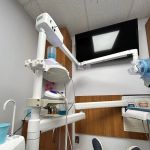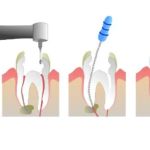
What to Expect During a Teeth Cleaning Appointment: A Comprehensive Guide
- The Importance of Regular Teeth Cleaning
- Preparing for Your Teeth Cleaning Appointment
- Steps Involved in the Teeth Cleaning Process
- What to Expect After a Teeth Cleaning Appointment
- Common Concerns and Tips for a Smooth Experience
Going for a professional teeth cleaning is an essential part of maintaining your oral health, but for some people, it can also be a bit nerve-wracking. Whether you're a first-timer or you've been for cleanings before, knowing what to expect during a teeth cleaning appointment can help ease your anxiety and make the experience more comfortable. As someone who has gone through numerous cleanings, I can share with you the process and what to expect, along with tips to ensure your appointment goes smoothly. Here’s everything you need to know about the teeth cleaning procedure and what happens during your visit.
1. The Importance of Regular Teeth Cleaning
Regular teeth cleanings are more than just a cosmetic procedure; they are essential for your overall oral health. I’ve learned over the years that regular cleanings, typically recommended every six months, help prevent serious issues like gum disease, cavities, and tooth decay. During my early visits, I realized that keeping up with my cleanings was the best way to maintain a healthy smile and avoid costly dental treatments in the future.
Teeth cleaning removes plaque and tartar buildup that cannot be eliminated through regular brushing alone. Plaque is a sticky film of bacteria that forms on your teeth, and if not removed, it hardens into tartar, which can only be cleaned by a professional. I’ve noticed that consistent cleanings help keep my teeth white, my gums healthy, and my breath fresh, making it an important aspect of my overall dental care routine.
2. Preparing for Your Teeth Cleaning Appointment
Before you head to your teeth cleaning appointment, it’s important to make sure you’re well-prepared. First, make sure to brush and floss your teeth before the appointment, as this can help your dental hygienist work more efficiently. If you’re someone like me who gets anxious about dental visits, consider bringing a pair of headphones and listening to calming music or podcasts during the cleaning to help you relax.
Also, make sure to inform your dental hygienist of any specific concerns or conditions you might have, such as sensitive teeth or a history of gum disease. This will allow them to adjust the cleaning technique and use the proper tools to ensure your comfort. I’ve found that communicating any discomfort helps the hygienist tailor the treatment to my needs, which makes the experience much more pleasant.
3. Steps Involved in the Teeth Cleaning Process
Now, let’s break down the typical steps involved in a teeth cleaning procedure. The process is generally straightforward and can take anywhere from 30 minutes to an hour, depending on the state of your oral health. Here’s what you can expect:
3.1 Initial Examination
When you first arrive, the dental hygienist will begin by examining your teeth and gums. This involves using a small mirror and probe to check for any signs of cavities, gum disease, or other issues. I’ve always appreciated this step, as it helps my dentist identify any potential problems early on, so they can address them before they become serious.
3.2 Scaling
Next, the hygienist will use a special tool to remove plaque and tartar buildup from your teeth. This process is known as scaling. It may sound a bit intimidating, but in my experience, it’s usually painless. The hygienist uses a small metal scaler to gently scrape off the tartar, working around the gum line and between the teeth. For those with significant tartar buildup, the process may take a little longer, but it’s essential for your oral health.
3.3 Polishing
Once all the tartar has been removed, the hygienist will polish your teeth with a special tool and a gritty toothpaste. The polishing helps smooth the surface of your teeth, which can help prevent plaque buildup. It also leaves your teeth feeling smooth and fresh, and I love the minty taste that lingers afterward!
3.4 Flossing
After polishing, the hygienist will floss between your teeth to remove any remaining debris and polish that may have been left behind. This step ensures that all areas are thoroughly cleaned. I find that this part of the cleaning helps remove any discomfort I may have had from the previous steps and leaves my mouth feeling completely refreshed.
3.5 Fluoride Treatment (Optional)
At the end of the appointment, your dentist or hygienist may apply a fluoride treatment to help protect your teeth against cavities. The fluoride is applied with a tray that sits in your mouth for a minute or two. It helps strengthen the enamel of your teeth and can reduce the risk of decay. It’s a quick and effective treatment that I’ve always found beneficial, especially when I had a history of cavity-prone teeth.
4. What to Expect After a Teeth Cleaning Appointment
After your cleaning, you may experience some mild sensitivity in your teeth and gums, especially if you had significant tartar buildup or sensitive teeth beforehand. I’ve found that this usually subsides within a day or so. Additionally, you may notice that your gums bleed a little if they were inflamed before the cleaning. This is normal and should resolve as your gums heal and your oral hygiene improves.
Your dentist or hygienist will also give you personalized advice on how to maintain your oral health until your next appointment. I’ve always appreciated the recommendations for improving my brushing technique or switching to a different toothpaste that’s more suitable for my needs.
5. Common Concerns and Tips for a Smooth Experience
Many people, like myself, have concerns before a teeth cleaning appointment, such as fear of pain or discomfort. It’s completely normal to feel nervous, but the cleaning process is typically quick and doesn’t cause much pain. If you’re concerned about sensitivity or discomfort, be sure to discuss these issues with your hygienist beforehand. They may offer tips on how to manage pain or even offer a numbing gel for those who experience significant discomfort during scaling.
Additionally, if you have anxiety about the dentist, it can help to schedule your cleaning during a time when you’re not feeling rushed or stressed. Bringing a friend or family member for support can also ease your nerves. The more relaxed you are, the smoother the experience will be.
Regular teeth cleanings are an important part of maintaining optimal oral health. By knowing what to expect during a teeth cleaning appointment, you can feel more confident and comfortable with the process. If you want to learn more about maintaining your dental health or need advice on oral hygiene, visit Dentistry Toothtruth for expert insights and tips.







 Hutchinson Metro Dental4.0 (2685 review)
Hutchinson Metro Dental4.0 (2685 review) Emerson Family Dental5.0 (273 review)
Emerson Family Dental5.0 (273 review) Mundelein Dental Center3.0 (8 review)
Mundelein Dental Center3.0 (8 review) Sunnyvale Pediatric Dentistry and Orthodontics4.0 (365 review)
Sunnyvale Pediatric Dentistry and Orthodontics4.0 (365 review) Great Smiles Dental Care4.0 (472 review)
Great Smiles Dental Care4.0 (472 review) Larchmont Family Dental5.0 (532 review)
Larchmont Family Dental5.0 (532 review) The Importance of Oral Health Education During Pregnancy for a Healthy Pregnancy
The Importance of Oral Health Education During Pregnancy for a Healthy Pregnancy Best Tips for Brushing Your Teeth Properly for Healthy Gums: Essential Techniques for Oral Health
Best Tips for Brushing Your Teeth Properly for Healthy Gums: Essential Techniques for Oral Health Why Skipping Dental Checkups Can Lead to Bigger Oral Health Problems
Why Skipping Dental Checkups Can Lead to Bigger Oral Health Problems Advantages of Porcelain Dental Restorations
Advantages of Porcelain Dental Restorations How Can Diabetes Cause Tooth and Gum Problems? Preventing and Managing Oral Health Issues
How Can Diabetes Cause Tooth and Gum Problems? Preventing and Managing Oral Health Issues Healthy Habits for Promoting Good Oral Health and Hygiene: Tips for a Healthy Smile
Healthy Habits for Promoting Good Oral Health and Hygiene: Tips for a Healthy Smile